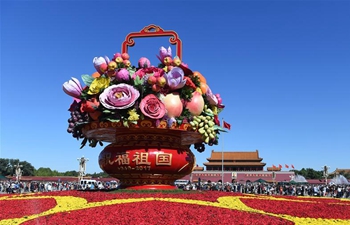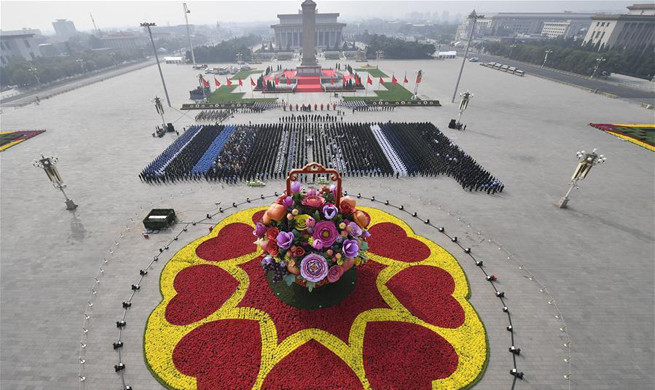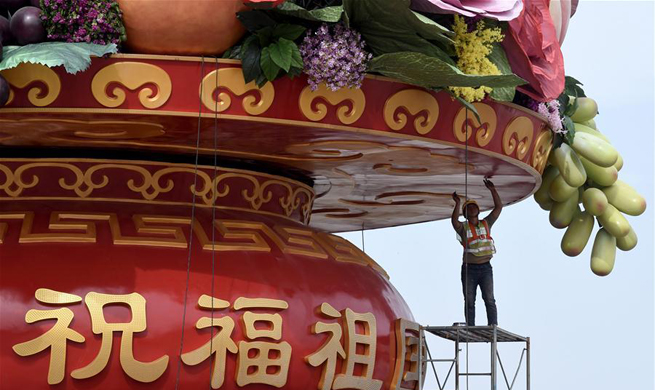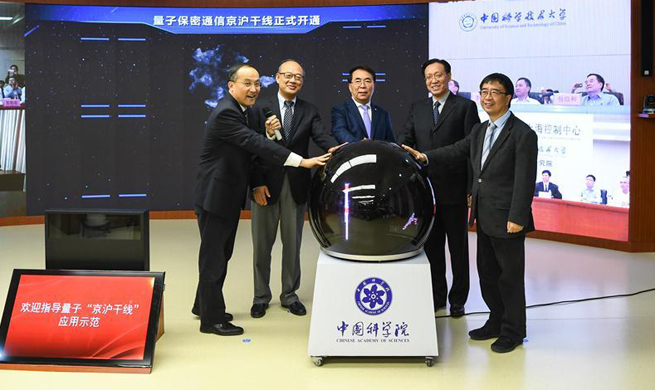GUANGZHOU, Sept. 30 (Xinhua) -- In late 2016, Zhang Jianzhou was put in charge of a cross-country M&A project worth more than 3.9 billion U.S. dollars.
Zhang, vice president of Apexmic, a Zhuhai-based company specializing in integrated circuit making in southern China's Guangdong Province, was tasked with acquiring Lexmark International, a company listed on the New York Stock Exchange.
At that time, China's currency the renminbi (yuan) had been included in the Special Drawing Right (SDR) basket of the IMF for more than one month. Following the yuan's entry in the basket, the exchange rate between the yuan and dollar experienced strong fluctuations.
It was a tough situation for Zhang, who had to find a proper plan to lower the risks and costs as much as possible.
With the support of the Guangzhou branch of the People's Bank of China (PBOC), the central bank, Zhang soon managed to sign deals with two other banks, which granted about 8 billion yuan (1.2 billion U.S. dollars) of cross-border loans to the M&A project.
"As the renminbi was going global, we wanted to prepare for the yuan's international settlement in the future, which is why we applied for the loans in renminbi," Zhang said.
After a few adjustments, Apexmic formed a consortium worth 2.68 billion U.S. dollars. In May this year, the M&A was completed, and Apexmic was renamed Ninestar, with annual sales revenue expected to exceed 3 billion yuan.
"The project proved that financing in renminbi is an effective channel," Zhang said. "It provides a stable mechanism for healthy economic activities."
Sunday marks the first anniversary of the yuan officially joining the elite reserve currency basket. The inclusion makes the yuan one of the five reserve currencies fully endorsed by the 189-member organization, joining the U.S. dollar, the euro, the Japanese yen and the British pound.
The PBOC called the yuan's SDR inclusion "a milestone in the internationalization of the yuan" and "a recognition of China's progress in economic development as well as financial reforms and opening up."
In the past year, despite increasing fluctuations, the yuan has gained significant recognition.
"The market has realized that the two-way volatility in renminbi trading is significant, and the interest rate will be more flexible in the future," said an employee at a Guangzhou branch of SPD Bank.
She said that both companies and individuals took time to get used to the situation, and that after the initial phase, the market had adapted to the volatility.
According to the PBOC Guangzhou branch, Guangdong had 55,614 companies and 3,280 bank outlets handling settlements in renminbi by the end of August. The province, which has the biggest economic aggregate in China, has conducted renminbi settlement with 213 countries and regions.
According to secure financial messaging service provider SWIFT, by the end of June more than 1,900 financial institutions were using the yuan for settlement, and about 56 foreign central banks or monetary authorities hold capital in renminbi in China and have included it in their foreign currency reserves.
"China has strengthened the transparency of its exchange rate policies after joining the SDR, and the yuan is getting more and more attention in the international financial market," said Guan Tongwei, a professor at Guangdong University of Finance.
"China is promoting the free floating of the renminbi based on its economic situation, market expectations and the price indexes of various countries," Guan said. "The renminbi will continue its mission to serve people all over the world."

















